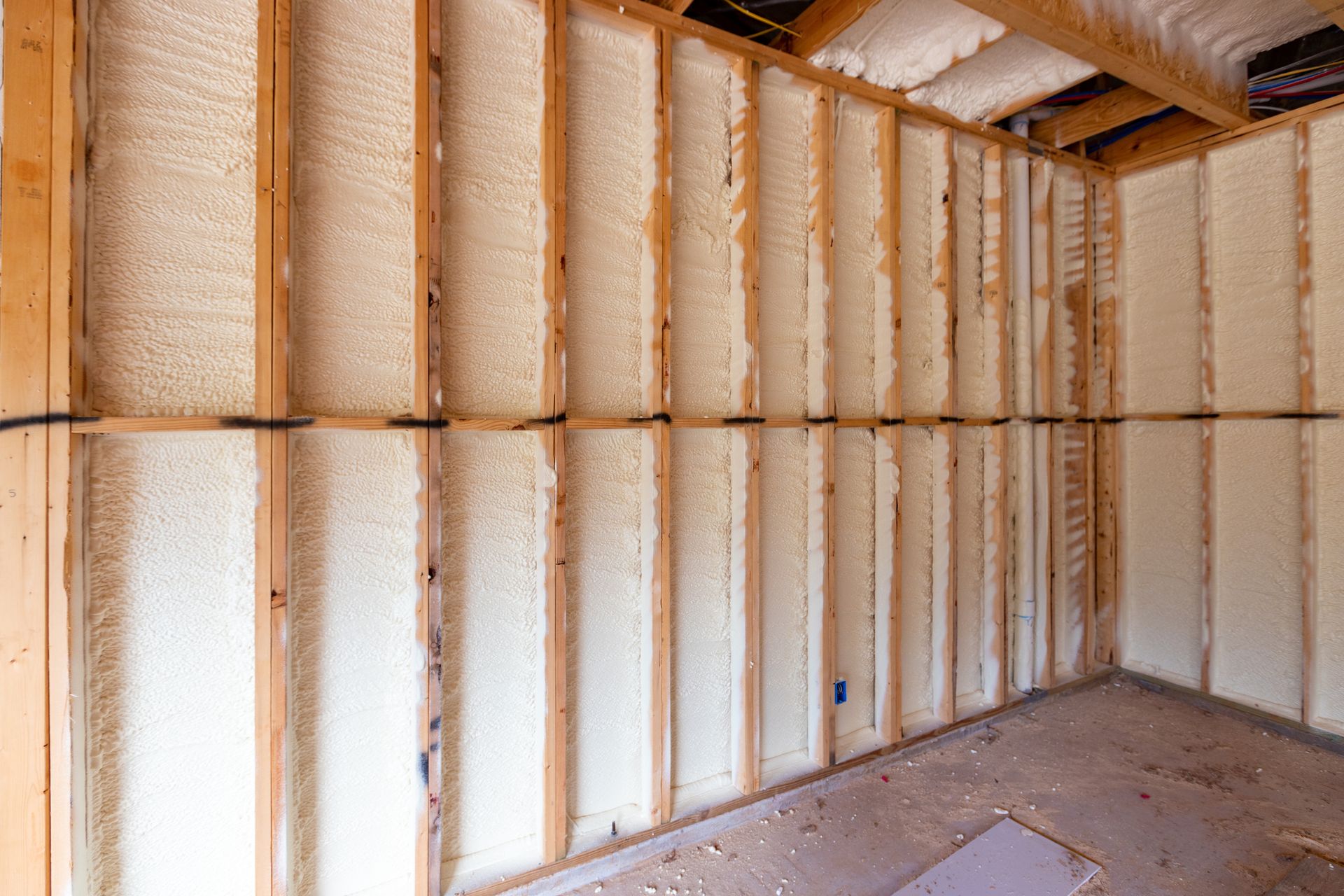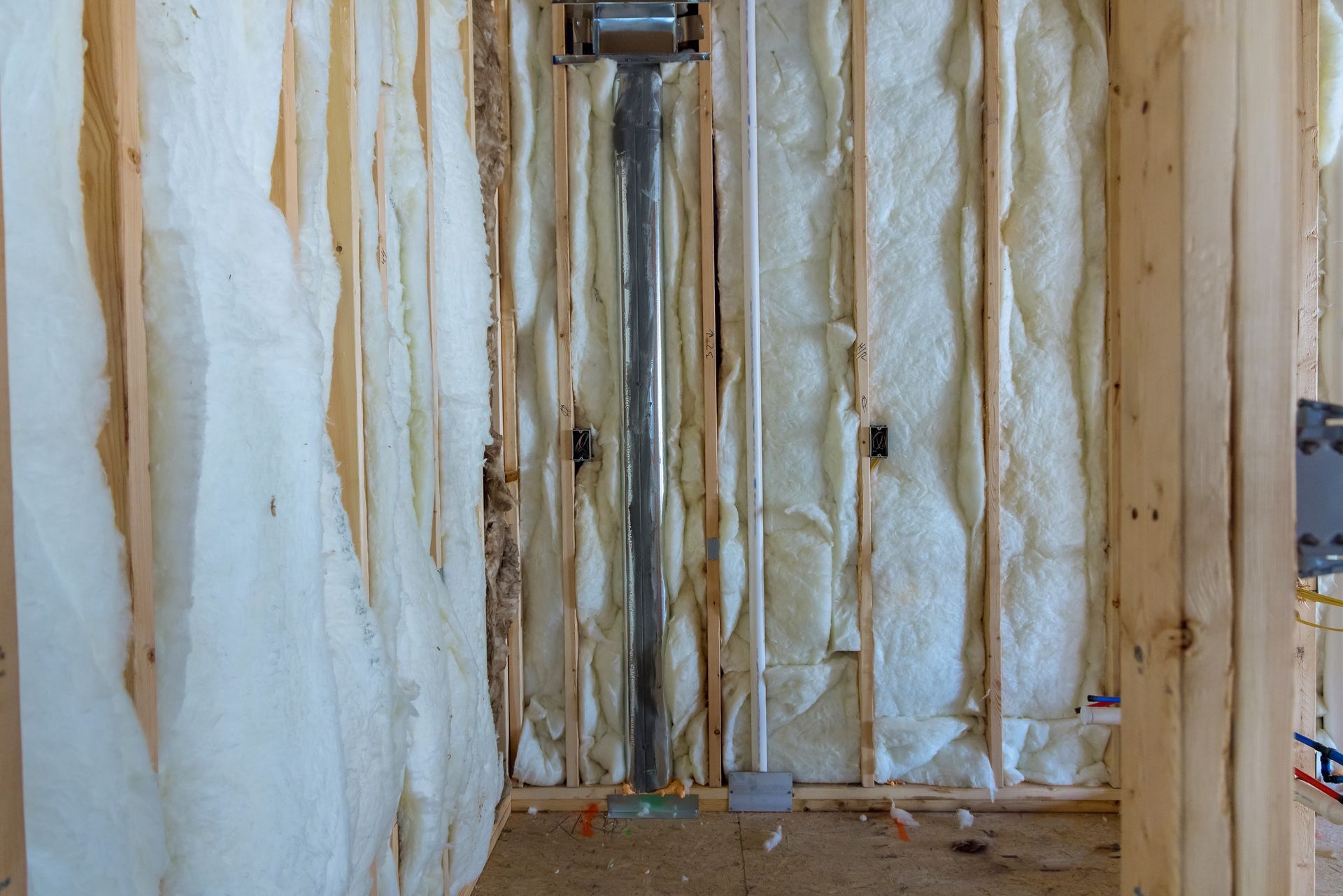Spray Polyurethane Foam (SPF) is a spray-applied cellular plastic made by mixing chemicals to create foam. Those chemicals react very quickly, expanding on contact to create foam that insulates air seals and provides a moisture barrier. When properly installed, spray foam insulation forms a continuous barrier on walls, around corners, and on contoured surfaces. It resists heat transfer very well and is an effective solution for reducing unwanted air infiltration through cracks, seams, and joints.
There Are 2 Main Types of Spray Foam Insulation: Closed-Cell Foam or Open-Cell Foam
Closed-cell spray foam is the preferred product used by professional insulators to instantaneously air seal cracks, form a vapor barrier, add structural strength, and efficiently insulate homes, garages, workshops, pole barns, and large storage buildings.
This is not to be confused with open-cell spray foam, which is commonly sold in aerosol cans and applied through a straw to fill in small gaps and cracks. These are two completely different products, although some insulation installers still apply the less efficient open-cell foam with commercial spray foam equipment.
What Are the Energy-Efficiency Benefits of Spray Foam Insulation?
Save Energy, Precious Natural Resources, and Our Environment.
Polyurethane Spray Foam helps conserve precious natural resources, like lumber from our forests, because the high R values of Polyurethane sprayed foam insulation allow architects to reduce the thickness of wood frame walls and ceilings, thus reducing the size of wood structural beams.
Polyurethane spray foam insulation also helps to protect our natural environment by using a new generation of blowing agents that has zero ozone depletion.
Reduce the Size of Heating and Air Conditioning Equipment
HVAC sizing can be reduced by as much as 35% without the loss of efficiency and comfort. (Source: Canadian Urethane Foam Contractors Association)
Closed-Cell Foam Is Considered a Class II Vapor Retarder
Moisture and humidity inside your home can lead to mold growth. Closed-cell foam not only fills gaps and cracks in the building structure but also acts as a vapor barrier to prevent moisture and humidity problems during the extreme temperature variations we experience in Minnesota.
Block the Entry of Insects and Pests
Closed-cell spray foam bonds and seal gaps, providing a solid barrier against insects and other pests where it is applied.
Closed-Cell Spray Foam Insulation Adds Structural Strength
The home you build will be stronger, tighter, and feel more solid in strong winds. Polyurethane spray foam insulation bonds to framing and exterior sheathing and helps to glue the structure together. A study by the NAHB demonstrated that the addition of closed cell sprayed foam insulation added a 45% increase in racking loads over conventional wood frame/fiberglass construction.
Spray Foam Makes for a Healthier Home Environment
Foam insulation makes your home healthier by reducing the amount of dust, pollen, and allergens in the air. Many customers decide on foam insulation just for the air quality advantages of foam. Foam is extremely helpful to asthma and allergy sufferers.
Reduce Drafts While Increasing Comfort
Spray foam is an effective air barrier that is commonly used to prevent drafts from windows, doors, attics, and floorboards, creating a more comfortable indoor environment. Closed-cell spray foam also helps to completely air seal openings that may cause moisture problems.
Insulating With Spray Foam May Qualify for Utility Rebates
Learn More About Spray Foam Insulation
What Are the Recommended R-Values for Spray Foam Insulation?
Insulation levels are specified by R-Value, a measure of insulation's ability to resist heat traveling through it. The higher the R-value, the better the insulation performs to keep you comfortable.
How Spray Foam Insulation Works
To understand how insulation works, it helps to understand heat flow, which involves three basic mechanisms:
Conduction
Convection
Radiation
Air Sealing Your Home With Spray Foam
Reducing the amount of air that leaks in and out of your home is a cost-effective way to cut heating and cooling costs, improve durability, increase comfort, and create a healthier indoor environment.
11 Frequently Asked Questions About Insulating
Here are the answers to homeowners' eleven most frequently asked questions about spray polyurethane foam.
We Offer 3-Year Guarantees on Our Insulation Jobs.
Want to keep the weather out?


